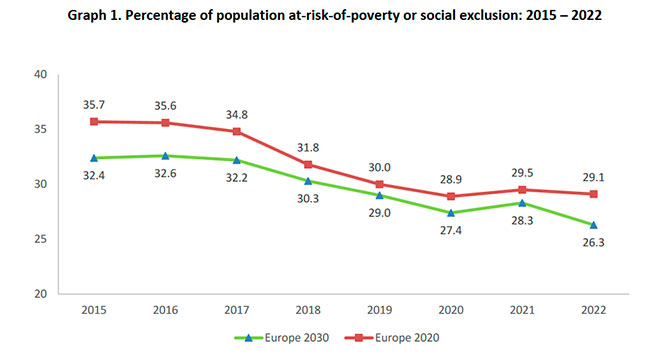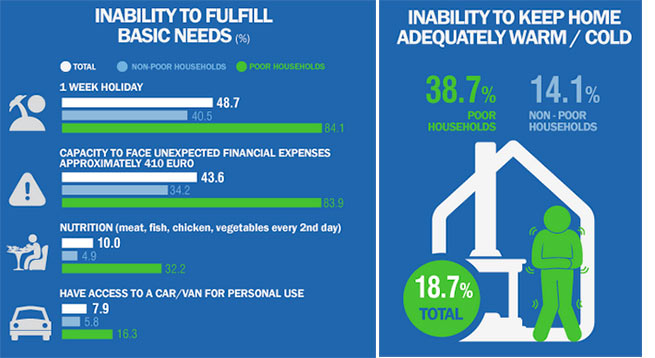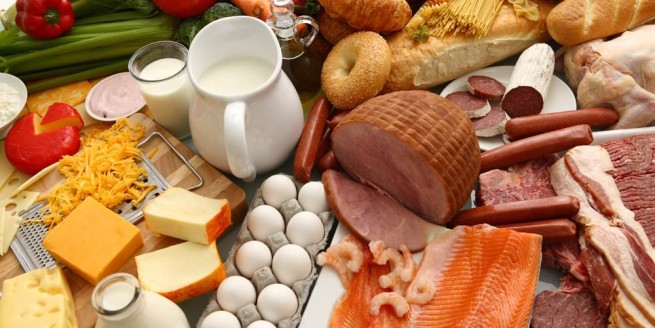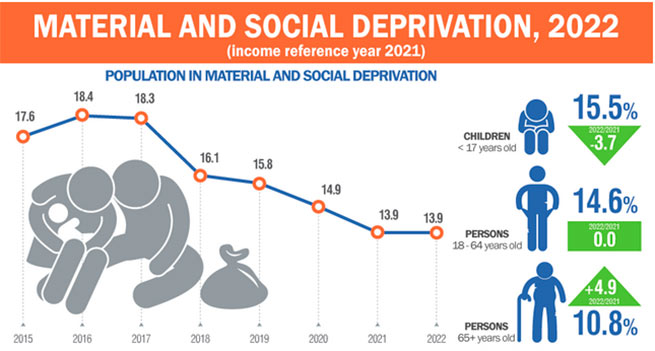Statistical Office of Greece ELSTAT released on Monday the results of its 2022 Household Income and Living Conditions Survey. They are not very comforting, despite the Mitsotakis government’s statement in the style of “life has become better, life has become more fun”.
Every fourth inhabitant of Greece is under the threat of social exclusion. Hundreds of thousands of families do not receive adequate nutrition and cannot pay their bills on time.
Risk of social exclusion for 25% of Greeks
The ELSTAT report says that the number of people at risk of poverty or social exclusion has decreased by 2% compared to 2021, and the projected risk of poverty has decreased by about 3% more and is at its lowest level since 2010.
A. Risk of poverty or social exclusion
Based on data from the 2022 Household Income and Living Conditions Survey, the population at risk of poverty or social exclusion, according to the revised definition1, is 26.3% of the country’s population (2,722,000 people), representing a decrease of 2.0 percentage points. points compared to 2021 (Chart 1).
The goal set in the field of social protection by the European action plan “Goals EU by 2030″: “The number of people at risk of poverty or social exclusion must be reduced by at least 15 million, of which at least 5 million must be children” by 2030.

Graph 1. Percentage of the population at risk of poverty or social exclusion: 2015 – 2022
1. Revised definition – population at risk of poverty or social exclusion: population at risk of poverty or experiencing material and social deprivation (i.e. the proportion of the population experiencing involuntary shortage of at least 7 out of 13 deprivation points) or living in households with very low labor intensity – more details in the explanatory notes.
Based on the original definition 2 of the above indicator, the population at risk of poverty or social exclusion is 29.1% (3,006,300 people) of the country’s population, representing a decrease of 0.4 percentage points compared to 2021.
The risk of poverty or social exclusion is higher among children aged 17 and under (28.1%), down 3.9 percentage points compared to 2021 (32.0%). The percentage of the population aged 18-64 living in households with low labor intensity is estimated at 10.9% of the total population in this age group, which indicates a decrease of 2.7 percentage points compared to 2021. The proportion of men is 9.9%, women – 12.0%.
The poverty line was €5,712 per year for a one-person household and €11,995 for households with two adults and two dependent children under the age of 14. By definition, it is set at 60% of the median total equivalent household disposable income, which has been estimated at €9,520, while the country’s median annual household disposable income has been estimated at €18,563.
- 84.1% of poor Greek households cannot afford 1 week vacation
- 83.9% report financial difficulties in meeting exceptional but necessary expenses of around €410
- 32.2% say they lack a diet that includes chicken, meat, fish or vegetables of equal nutritional value every other day
- 38.7% of poor Greek households report that they cannot afford adequate heating during winter, compared to 14.1% of non-poor households.

ELSTAT. Full Poverty Risk Report in English Here.
PS Based on the criteria that were applied before 2020, the situation is worse: 29.1% of the population (3,006,300 people) are at risk of poverty or social exclusion.
The risk of poverty or social exclusion is highest for children aged 17 and under (28.1%).
The OECD, whose credibility Kyriakos Mitsotakis called into question in his latest report, claims that real wages fell by 7.4% due to higher prices. Then he raised the topic of the unreliability of research by an international organization.







More Stories
Greece is at the bottom of the EU in information and communication technologies
Real wages in Greece fell by 30%
ELSTAT: inflation increased by another 3.2% in March